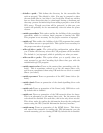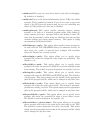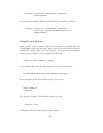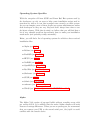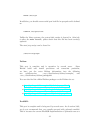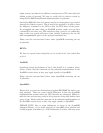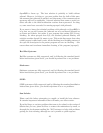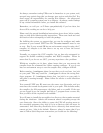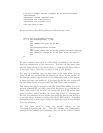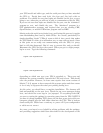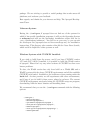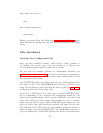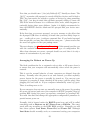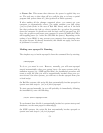As always, remember testing UPSes can be hazardous to you system, and,
apcupsd may contain bugs that can damage your system and data files! You
must accept all responsibility for running this software. An unexpected
power-off of a running system can be a disaster. As always, make backups
of any critical information before you install this software.
Remember, we told you. we’ll listen sympathetically if you lose data, but
there will be nothing we can do to help you.
Please read the general installation instructions given above before contin-
uing on with these Solaris-specific instructions. Then come back and read
this section before attempting to build the package.
For building the system, we suggest that you run the configure and make
processes as your normal UNIX user ID. The make install must be run
as root. But if your normal ID has an environment setup for using the C
compiler, it’s simpler to do that than to set up root to have the correct
environment.
Normally, we support the GCC compiler, but we have also attempted to
support the Solaris workshop compilers and EGCS compilers. Please be
aware that if you do not use GCC, you may experience a few problems.
Whichever compiler you do have, please insure that you can execute the
compiler from the command line before running configure. If you do not
have an environment setup to run the compiler first, configure will fail.
Before running ./configure, please be sure that you do not have /usr/ucb
on your path. This may cause the ./configure to choose the wrong shut-
down program. If ./configure detects that /usr/usb is on your path, it
will print a warning message. Please follow the advice to avoid shutdown
problems.
Your normal UNIX user ID must own the source tree directories, and you
must have the normal development tools in your path. This includes make,
the compiler, the M4 preprocessor, the linker, and ar or ranlib. If the user
you are logged in as can compile and link a C program from a source file,
then you have all the required tools available.
You will want to install the executables in a directory that remains mounted
during the shutdown. Solaris will unmount almost everything except the
root directories. Since the ability to power the UPS off requires access to
the executable programs, they need to be in a directory that will never be
unmounted. And since they should also be in a directory that normal users
cannot get into, /sbin is the default. However, please be aware that if you
want to follow Sun’s filesystem conventions you would use the following:
44



